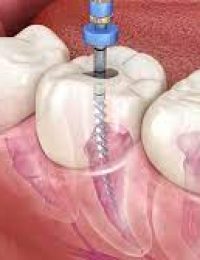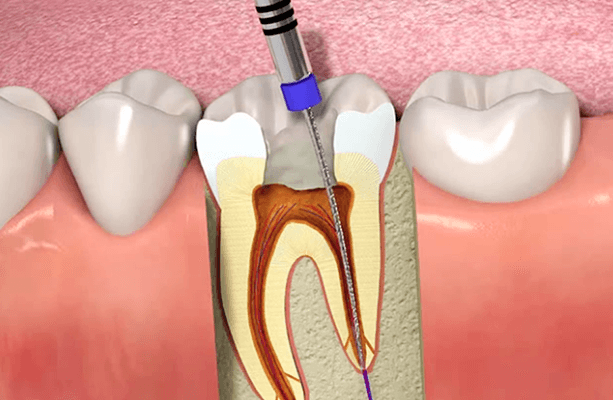WHAT IS Root Canal Treatment (RCT)?
Root Canal Treatment (RCT) also is known as Endodontic Treatment is a procedure done when the tooth decay reaches the pulp (innermost layer of the tooth) causing inflammation. It is necessary to save the damaged tooth from extraction. This procedure is done by an Endodontist who is known as a Root Canal Specialist. The procedure involves:
1. Removal of inflamed or infected tooth material
2. Cleaning and disinfection
3. Filling and sealing with an inert material
4. Restoration and crown/cap
It is a multi-step procedure and may require multiple sittings.


WHY DOES ONE NEED TO UNDERGO ROOT CANAL TREATMENT?
Root Canal Treatment is done on a damaged or infected tooth. Infection could be due to a cracked or broken tooth, deep decay, gum diseases or maybe due to repeated dental treatment on a particular tooth. It becomes extremely important to get the Root Canal Treatment as:
- 1. It stops the infection from spreading and will then save the tooth from extraction
- 2. RCT relieves the pain caused due to inflammationne for precise information
Indications for Root Canal Treatment:
- Severe toothache, often aggravated by hot or cold temperatures.
- Prolonged sensitivity to hot or cold, even after the source of the stimulus is removed.
- Swelling and tenderness in the nearby gums.
- Darkening or discoloration of the tooth.
- A pimple-like bump on the gum near the affected tooth, which may release pus.
Root Canal Treatment Procedure:
Diagnosis: The dentist first examines the tooth and takes X-rays to assess the extent of the infection or damage. This helps in planning the treatment.
Local Anesthesia: The tooth and the surrounding area are numbed with a local anesthetic to ensure that the patient is comfortable and pain-free during the procedure.
Isolation: The dentist places a rubber dam around the tooth to keep it dry and free from saliva during the procedure.
Access Opening: A small opening is created in the crown (top) of the tooth to access the pulp chamber and root canals.
Cleaning and Shaping: The infected or damaged pulp is removed from the pulp chamber and root canals. The interior of the tooth is cleaned, disinfected, and shaped to prepare for filling.
Filling: After thorough cleaning and shaping, the tooth’s interior is filled with a biocompatible material called gutta-percha. The access opening is sealed with a temporary or permanent filling.
Restoration: In most cases, a tooth that has undergone a root canal treatment will need a restoration to protect and strengthen it. This often involves placing a crown over the tooth.
Benefits of Root Canal Treatment:
- Pain Relief: RCT relieves severe toothache and discomfort caused by pulp infection.
- Tooth Preservation: It saves the natural tooth, avoiding the need for extraction.
- Functionality: The treated tooth can continue to function normally for biting and chewing.
Post-Treatment Care:
- After a root canal, some patients may experience mild discomfort or sensitivity, which can typically be managed with over-the-counter pain medications.
- Proper oral hygiene is essential to prevent reinfection.
Root canal treatment is a common and highly effective dental procedure that allows patients to retain their natural teeth even when the pulp is damaged or infected. It is important to consult with a qualified dentist or endodontist if you suspect the need for a root canal or are experiencing severe tooth pain.
